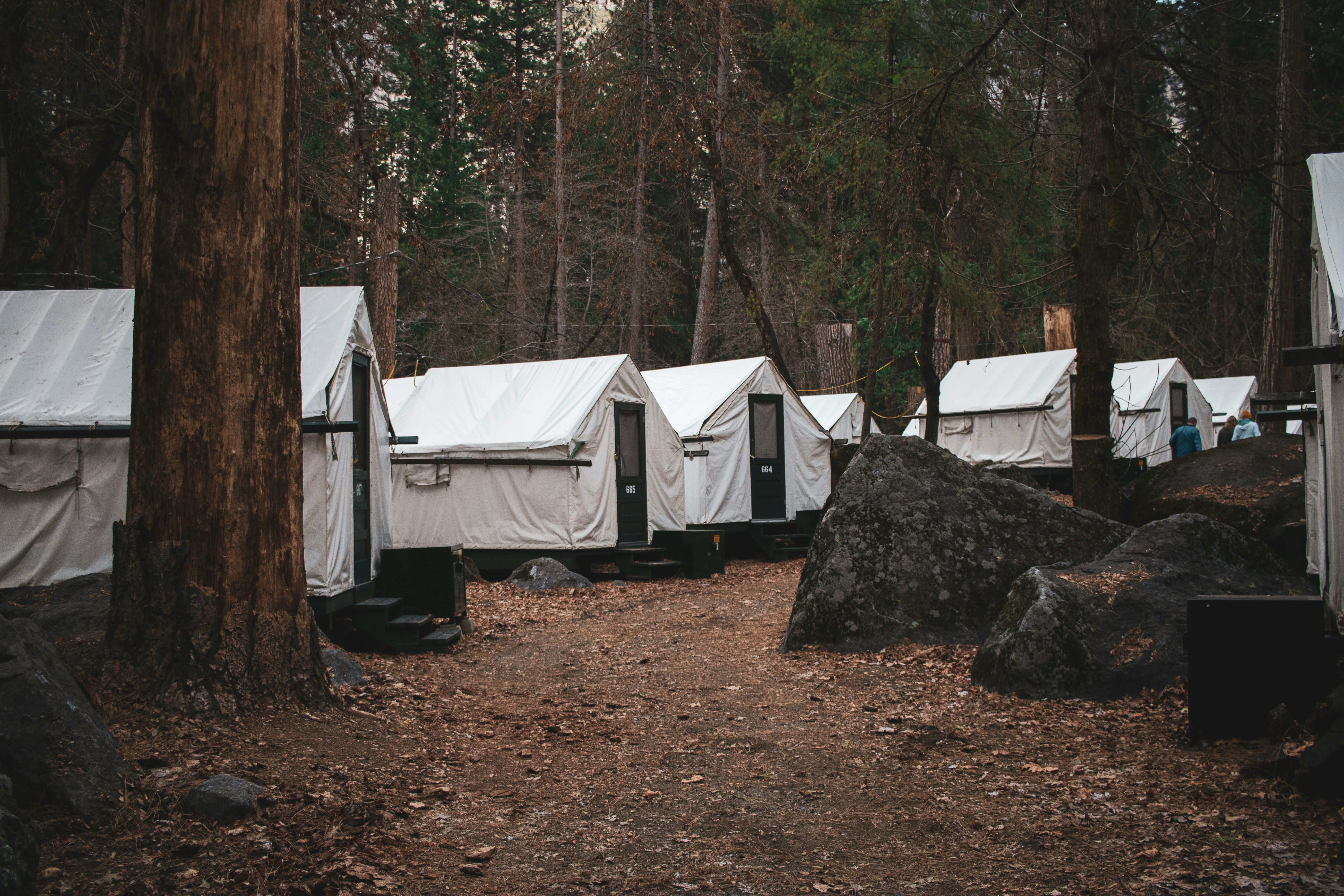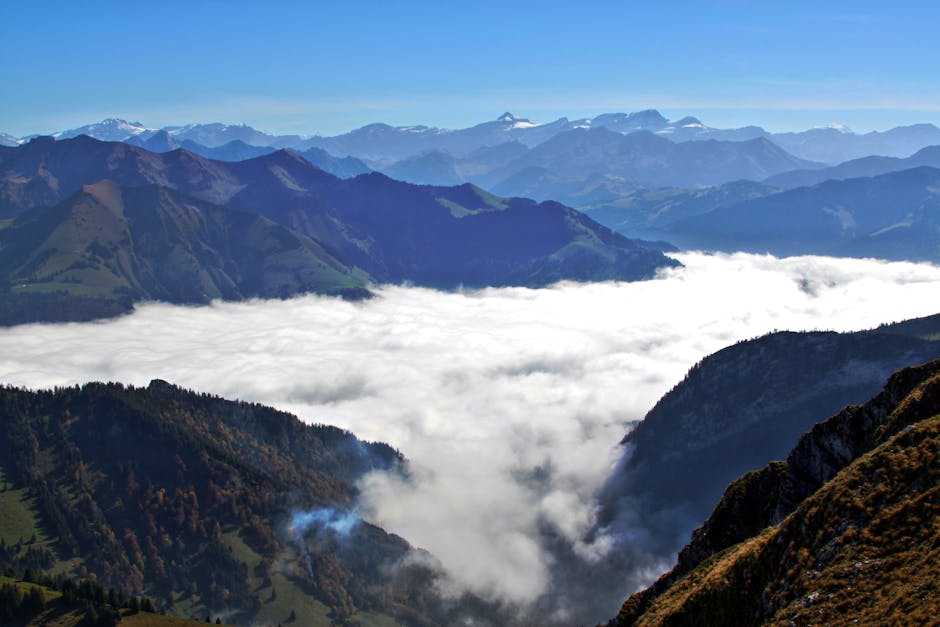Choose the Right Campsite
Start with where you sleep because when the weather turns, location can make or break your night. Low lying spots might look tempting: flat ground, a little tucked away. But those are the first to flood when heavy rain hits. Even a minor storm can turn your cozy area into a puddle.
Next, watch the skyline. Tall, solo trees are lightning magnets. Don’t bet your life on odds. If there’s a strike, that tree’s the first target and you don’t want your tent anywhere near it.
Look instead for natural protection without putting yourself in a risky spot. Rocky outcrops, thick tree bands, and ridgelines can block wind and blowback. They won’t fix everything, but they give you a strategic edge when the storm rolls in.
Set up smart. The rest of your gear depends on it.
Gear Up for the Elements
When camping in unpredictable or harsh weather, the right gear can make the difference between a challenging experience and a dangerous one. Prioritize quality equipment designed for rough conditions to stay comfortable and safe.
Choose a Tent That Withstands the Storm
Not all tents are created equal. In severe weather, especially heavy rain or snow, your standard summer tent won’t cut it.
Opt for a waterproof, 4 season tent built for year round protection
Look for a strong frame that can handle high wind and added weight from rain or snow
Ensure it has a full coverage rainfly and sealed seams
Don’t Forget the Ground Setup
Wet ground can quickly lead to soggy sleeping bags, ruined gear, and an uncomfortable night.
Pack extra ground tarps or footprints to create a moisture barrier between your tent and the earth
Use one tarp under the tent and consider a second inside the tent floor for added protection
Choose Quality Over Convenience for Rain Gear
When the weather turns rough, cheap gear gives out fast.
Invest in durable, breathable rain gear, including a jacket, pants, and boots
Avoid disposable ponchos they tear easily and offer minimal protection
Look for gear with taped seams and ventilation features to stay dry without overheating
Stay Dry, Stay Warm
Hypothermia doesn’t wait until you’re deep in the wilderness. It can creep in fast, especially when wet clothes and dropping temps meet poor planning. Start with the right layers: a moisture wicking base layer pulls sweat off your skin, an insulating mid layer traps heat, and a waterproof outer shell blocks rain and wind. Skip the cotton it holds water and chills fast.
Pack extra socks. No matter how good your boots are, wet feet will ruin your night and possibly your trip. Seal backups in a dry bag, and stash at least one thermal layer you haven’t worn yet. That backup might be the difference between comfort and danger.
Learn the signs of early hypothermia: shivering, slurred speech, low energy, and fumbling hands. Treat it early get out of wet clothes, wrap up in dry layers or an emergency blanket, and warm up slowly. Don’t just shrug it off. In the backcountry, small mistakes escalate fast.
Secure Your Camp Setup

Bad weather doesn’t wait, so prep like it’s coming in hot. Before the wind even thinks about showing up, double stake your tent corners and reinforce guy lines. Loose setups don’t just collapse they disappear.
Keep your gear off the ground and sealed in dry bags. Wet clothes, ruined electronics, and soaked sleeping pads are the fast track to misery. Elevating and sealing your gear is low effort insurance.
As for food and cookware, don’t get lazy. A little rain turns a forgotten skillet into a swampy animal magnet. Seal your food, stash it smart, and clean up right after meals. Your future self and your campsite will thank you.
Know When to Bail
Sometimes the smartest move is pulling the plug. If conditions go south fast temperatures dropping, wind howling, rain turning sideways don’t wait for it to get worse. Trust your instincts. If it feels off, it probably is. You won’t win points for sticking it out in dangerous weather.
Before you even pitch your tent, know how you’ll get out. Map the nearest shelter spot, trailhead, or ranger station in advance. Make sure your crew knows the route. And bring a paper map your phone won’t help much if it’s dead or soaked.
Lastly, tell someone where you’re going and when to expect you back. If the weather gets ugly and you miss a check in, they’ll know it’s time to act. Safety isn’t just about gear it’s also about not being invisible.
Think Safety First, Always
Bad weather isn’t just an inconvenience it’s a real threat if you’re unprepared. For starters, lightning. Don’t mess around. Get to lower ground fast, avoid water entirely, and steer clear of tall objects like tent poles or trees. If you can hear thunder, you’re already in strike range.
Weather awareness doesn’t stop with your eyes. Cell service may drop, so bring a weather radio or a reliable offline weather app. Update yourself regularly you don’t want to be caught off guard if a storm system suddenly shifts.
Lastly, don’t wait until someone’s hurt to learn first aid. Familiarize yourself with emergency basics ahead of time. It could mean the difference between a minor scare and a major problem. Start with this solid primer on how to prevent camping injuries.
Final Prep Thoughts
Mother Nature doesn’t care how waterproof your tent is if you don’t know how to set it up fast when the rain’s coming sideways. Run practice setups at home backyard during a downpour beats figuring things out at 2 a.m. mid storm. Even a one night trip close to home can prep you far better than any gear review.
When you’re headed off grid, over preparation isn’t a luxury it’s the bare minimum. Bring more than you think you’ll need: food, heat sources, dry socks, backup batteries. And plan like everything will take twice as long as expected. Because it will.
In the thick of it, smart choices beat shiny gear. Trust your instincts. Don’t take risks just to stick to a plan. Safety isn’t just about what you packed it’s about how you react when things go sideways.
Need more survival insights beyond the storm? Dive into our full strategy guide on how to prevent camping injuries before your next outing.


 Karencita Oboyler brings her creative flair and deep appreciation for the natural world to her role at Terra Tactician Tactics. With a background in digital marketing and content strategy, Karencita is dedicated to crafting engaging and visually appealing articles that captivate the platform's diverse audience. Her work focuses on highlighting unique outdoor destinations, offering practical travel advice, and showcasing the beauty of nature through stunning photography and storytelling. Karencita's ability to blend creativity with valuable information has helped Terra Tactician Tactics stand out as a dynamic and compelling resource for outdoor enthusiasts.
Beyond her content contributions, Karencita is passionate about building a vibrant community around the platform. She is committed to fostering an inclusive space where everyone, from seasoned adventurers to curious beginners, feels welcomed and inspired to explore the great outdoors. Her innovative ideas and strategic approach to content development have been instrumental in expanding Terra Tactician Tactics' reach and impact. Karencita's enthusiasm for the project is matched only by her love for nature, making her an integral part of the team and its continued success.
Karencita Oboyler brings her creative flair and deep appreciation for the natural world to her role at Terra Tactician Tactics. With a background in digital marketing and content strategy, Karencita is dedicated to crafting engaging and visually appealing articles that captivate the platform's diverse audience. Her work focuses on highlighting unique outdoor destinations, offering practical travel advice, and showcasing the beauty of nature through stunning photography and storytelling. Karencita's ability to blend creativity with valuable information has helped Terra Tactician Tactics stand out as a dynamic and compelling resource for outdoor enthusiasts.
Beyond her content contributions, Karencita is passionate about building a vibrant community around the platform. She is committed to fostering an inclusive space where everyone, from seasoned adventurers to curious beginners, feels welcomed and inspired to explore the great outdoors. Her innovative ideas and strategic approach to content development have been instrumental in expanding Terra Tactician Tactics' reach and impact. Karencita's enthusiasm for the project is matched only by her love for nature, making her an integral part of the team and its continued success.